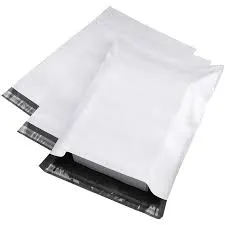Effective Use of Sanitary Disposable Gloves in Various Professional Settings
The Importance of Sanitary Disposable Gloves in Modern Hygiene Practices
In today’s world, where hygiene and safety have become paramount, sanitary disposable gloves play an essential role in various sectors. From healthcare and food service to personal care and cleaning industries, these gloves act as a barrier against contaminants, ensuring that both the user and the environment remain safe and sanitary. This article explores the significance of using sanitary disposable gloves, their types, applications, and best practices for usage.
Importance of Sanitary Disposable Gloves
The primary purpose of sanitary disposable gloves is to provide a protective layer between the skin of the user and potentially harmful substances. In healthcare settings, for instance, gloves are crucial for preventing the transmission of pathogens and infectious diseases. Medical professionals wear gloves during examinations, surgeries, and when handling biological materials to minimize the risk of cross-contamination.
In food service, the use of disposable gloves helps prevent foodborne illnesses. Kitchen staff are required to wear gloves while preparing food, especially when they are handling raw ingredients, to reduce the chances of contamination. The Centers for Disease Control and Prevention (CDC) emphasizes the importance of proper glove use in promoting food safety.
Types of Sanitary Disposable Gloves
Sanitary disposable gloves come in various materials, each with its own unique properties and applications. The most commonly used materials include
1. Latex Gloves Known for their elasticity and comfort, latex gloves are widely used in the medical field. However, some individuals may have latex allergies, which can limit their use in certain situations.
2. Nitrile Gloves These gloves are made from a synthetic rubber and are a popular choice due to their resistance to punctures and chemicals. Nitrile gloves are often used in the medical field, in laboratories, and for handling chemicals, as they provide greater durability than latex gloves.
3. Vinyl Gloves Made from polyvinyl chloride (PVC), vinyl gloves are a cost-effective choice for short-term tasks that do not require high levels of protection. They are often used in food service and light household tasks.
4. Polyethylene Gloves These are the thinnest and least durable disposable gloves, usually made from a form of plastic. They are often used in situations where frequent glove changes are needed, such as in food service for quick, low-risk tasks.
sanitary disposable gloves

Applications of Sanitary Disposable Gloves
Beyond healthcare and food service, sanitary disposable gloves are utilized in various other fields, such as beauty and personal care, cleaning services, and industrial applications. In beauty salons, gloves are essential for hair coloring treatments and other services that involve direct contact with skin or chemicals. Cleaning professionals use gloves to protect their hands from toxic substances and harsh chemicals while maintaining cleanliness in homes and offices.
Best Practices for Using Sanitary Disposable Gloves
To maximize the effectiveness of sanitary disposable gloves, adhering to proper usage guidelines is essential
1. Hand Hygiene Always wash hands thoroughly before putting on gloves and after removing them. This practice helps to eliminate any contaminants that may have been transferred during the process.
2. Inspection Check gloves for any punctures, tears, or defects before use. Using damaged gloves can compromise protection.
3. Change Gloves Frequently Replace gloves after each task or whenever they become visibly soiled. Reusing gloves can lead to cross-contamination.
4. Proper Disposal Dispose of gloves immediately after use in a designated waste container. Avoid touching the outside of the gloves while removing them to prevent contamination of hands.
5. Choosing the Right Glove Select the appropriate type of glove for the specific task. Consider factors such as the level of protection required and potential allergies.
Conclusion
In conclusion, sanitary disposable gloves are a vital component of modern hygiene practices across various industries. They serve as an effective barrier against contaminants, ensuring safety and cleanliness for both individuals and the public. By understanding the different types of gloves available and following proper usage guidelines, we can help mitigate risks associated with contamination and promote a healthier environment for everyone.
-
The Best Uses for Small Trash Bags in Daily LifeNewsJul.01,2025
-
Stylish Reusable Grocery Bags TrendsNewsJul.01,2025
-
Shipping Advantages of Using Bubble Envelopes BulkNewsJul.01,2025
-
How Compostable Mailing Bags Reduce Environmental ImpactNewsJul.01,2025
-
Environmentally - Friendly Bulk Poly MailersNewsJul.01,2025
-
Eco Friendly Custom Laminated Tote BagsNewsJul.01,2025
-
Have the freedom of customizing your custom mailers any way you want! Our dedicated packaging support will help deliver you the mailing experience you need to elevate your shipping experience to the next level! Start making a strong impression on your customers and stand out from your competitors! -
LIYA uses high quality raw materials which directly purchased from large enterprises domestic and overseas such as PetroChina, Sinopec, Sabic, Equate, ExxonMobil, Dow Chemical, Total, and Borouge, ensuring the price advantage and quality of the raw materials. -
LIYA uses high quality raw materials which directly purchased from large enterprises domestic and overseas such as PetroChina, Sinopec, Sabic, Equate, ExxonMobil, Dow Chemical, Total, and Borouge, ensuring the price advantage and quality of the raw materials.





